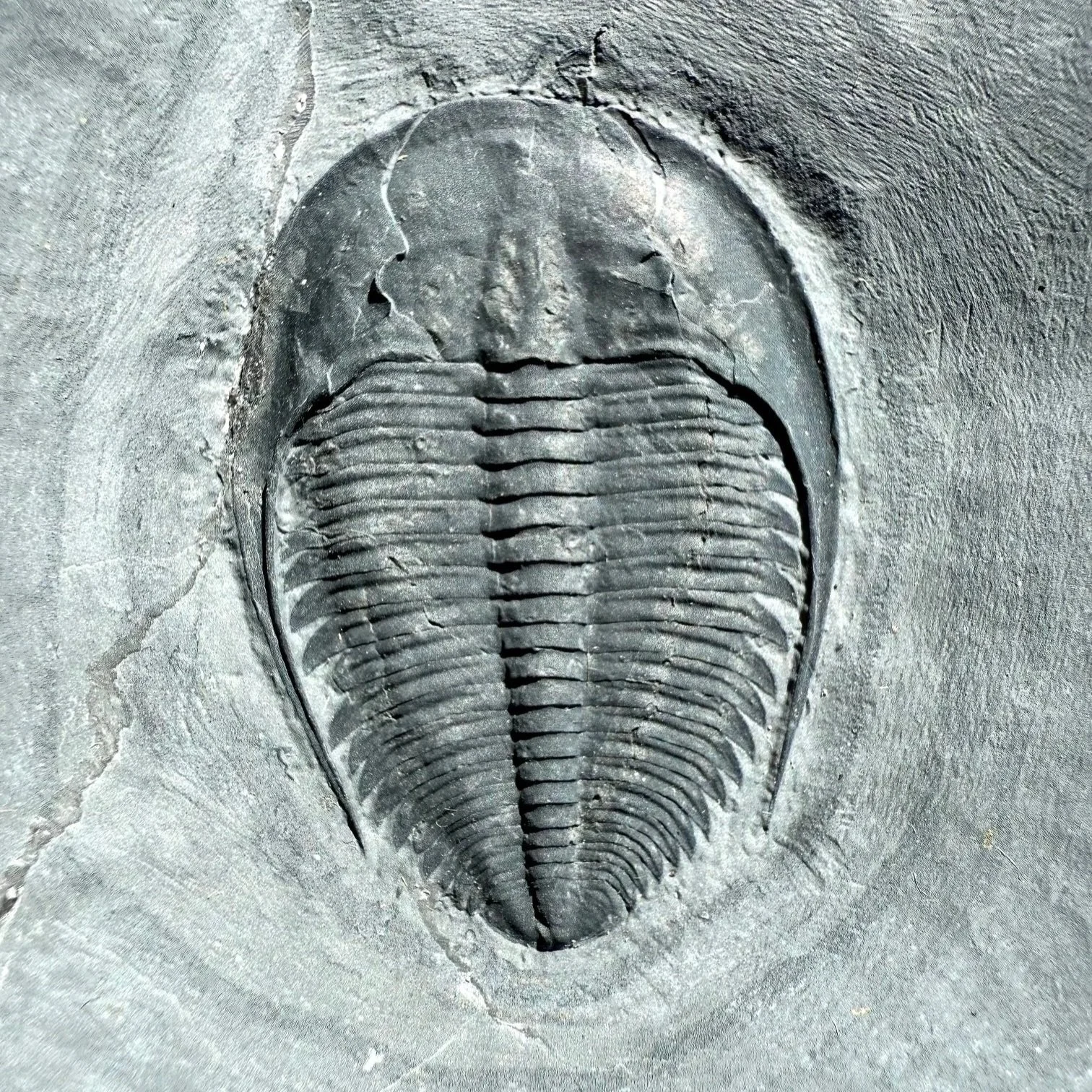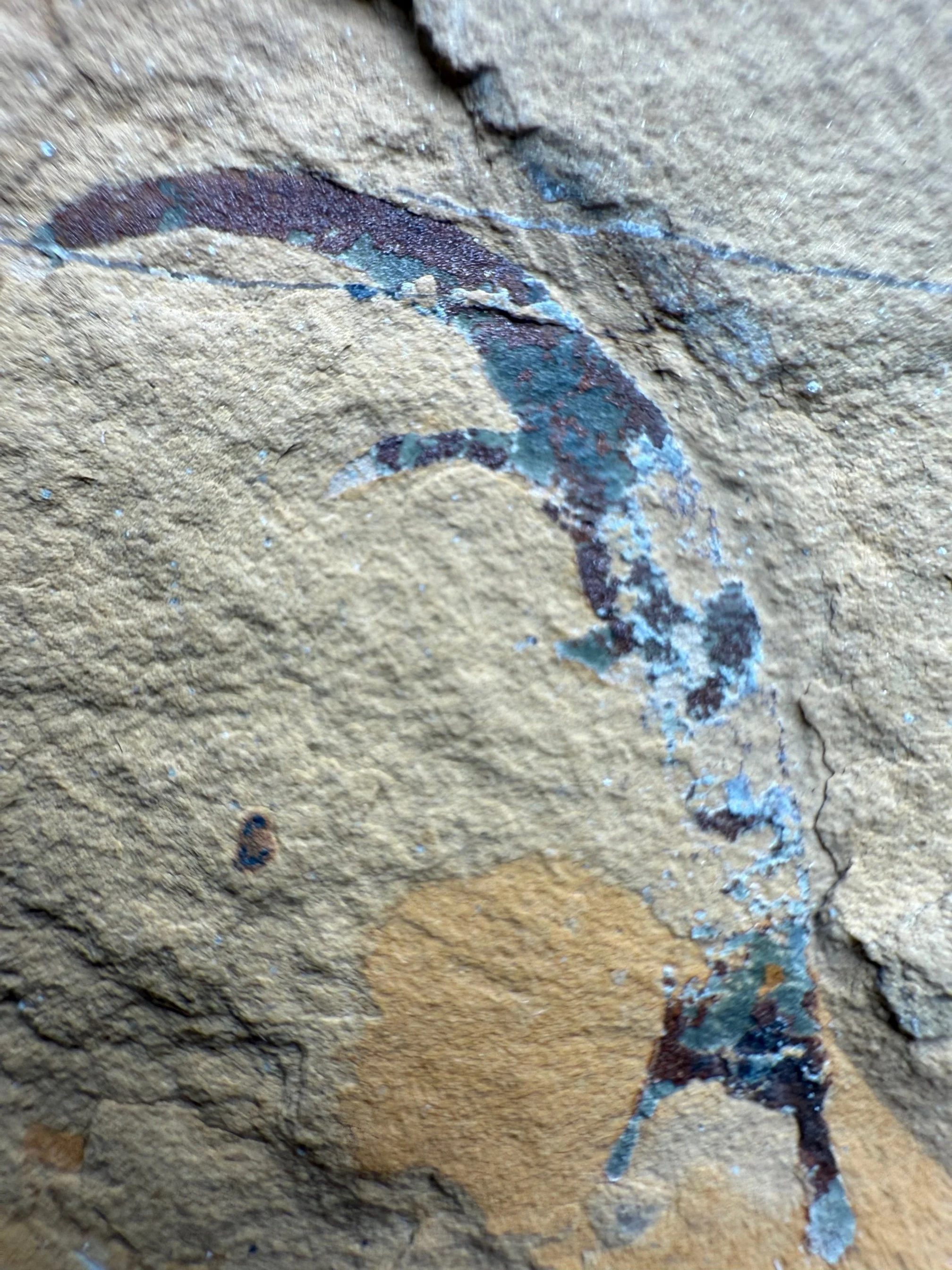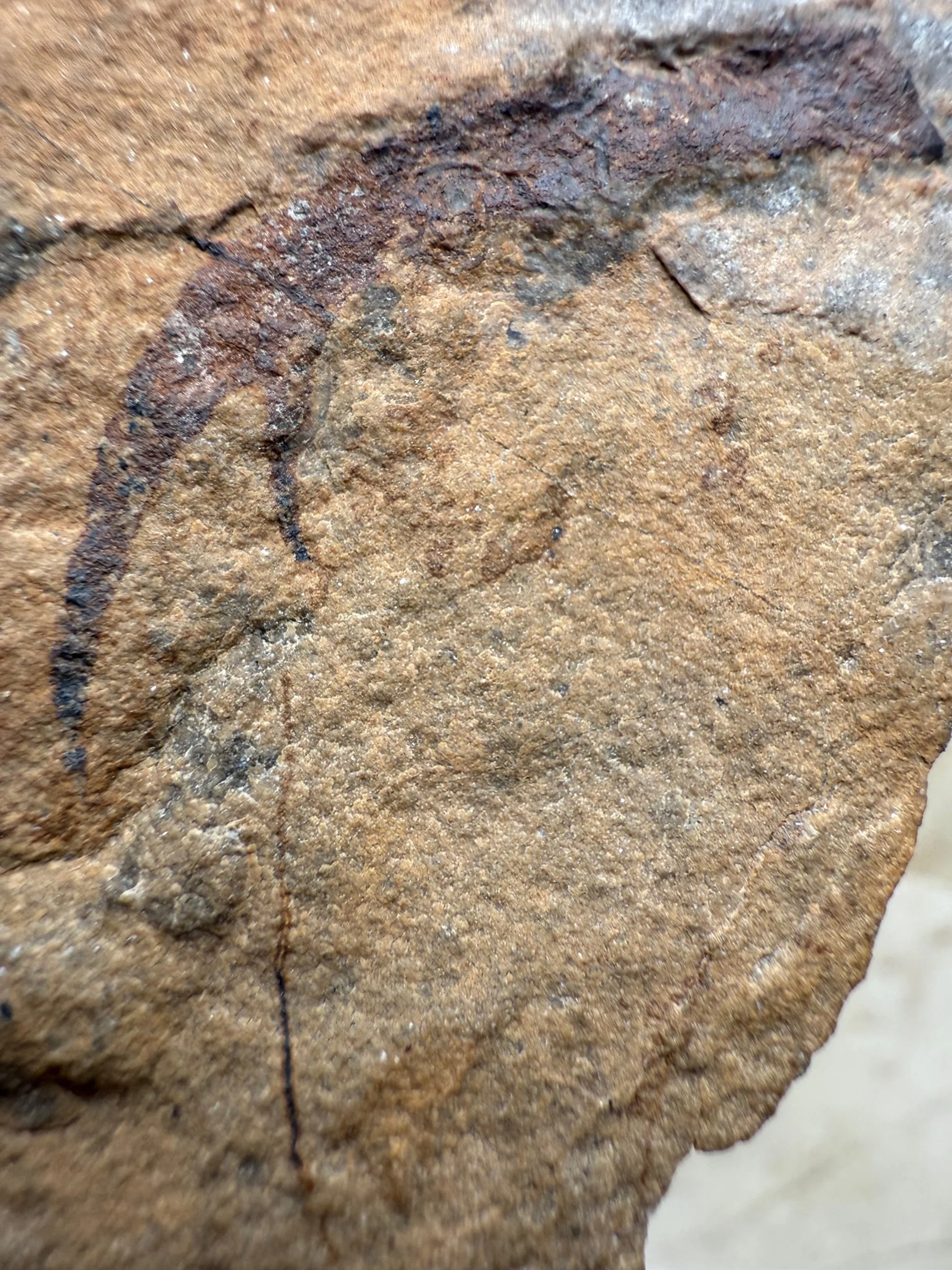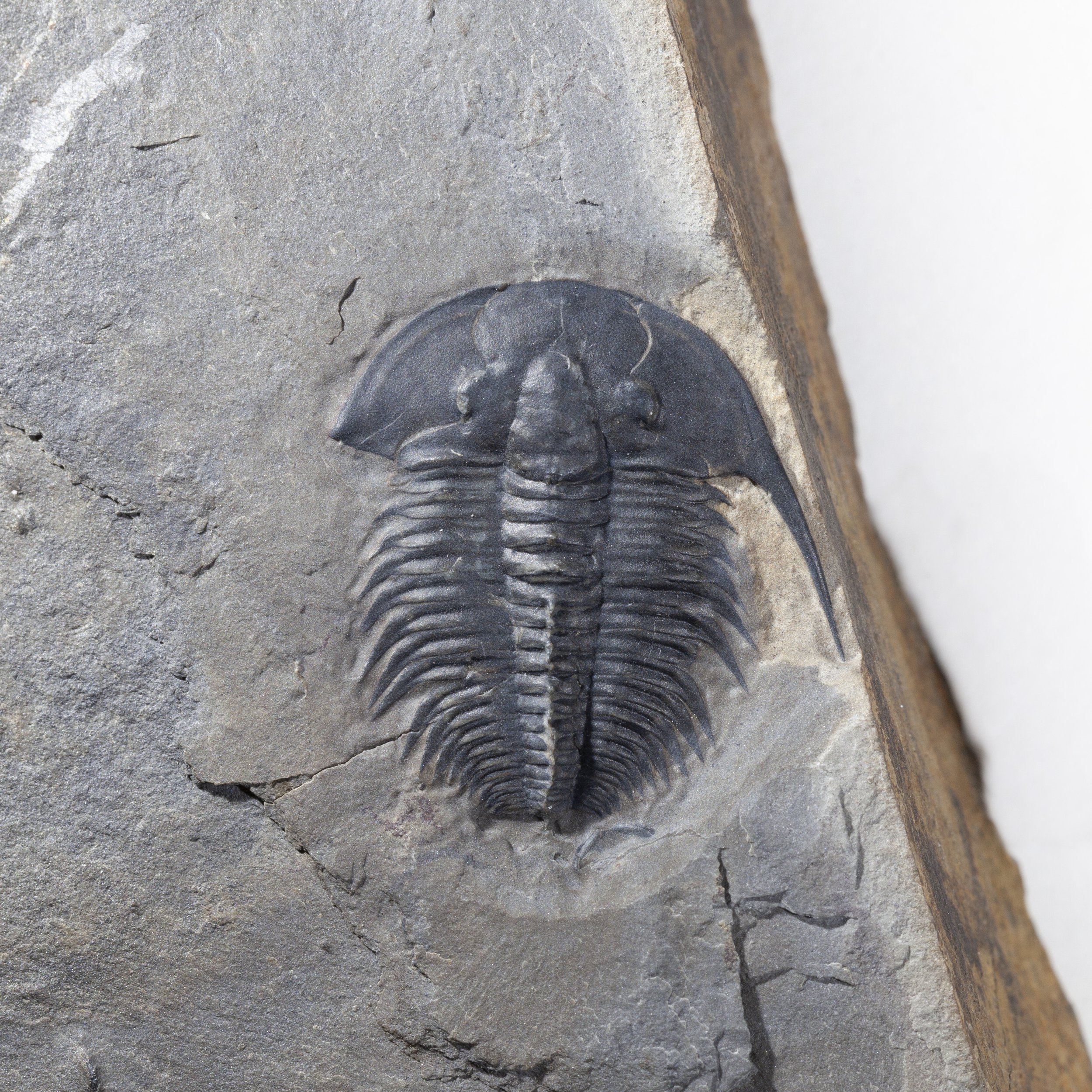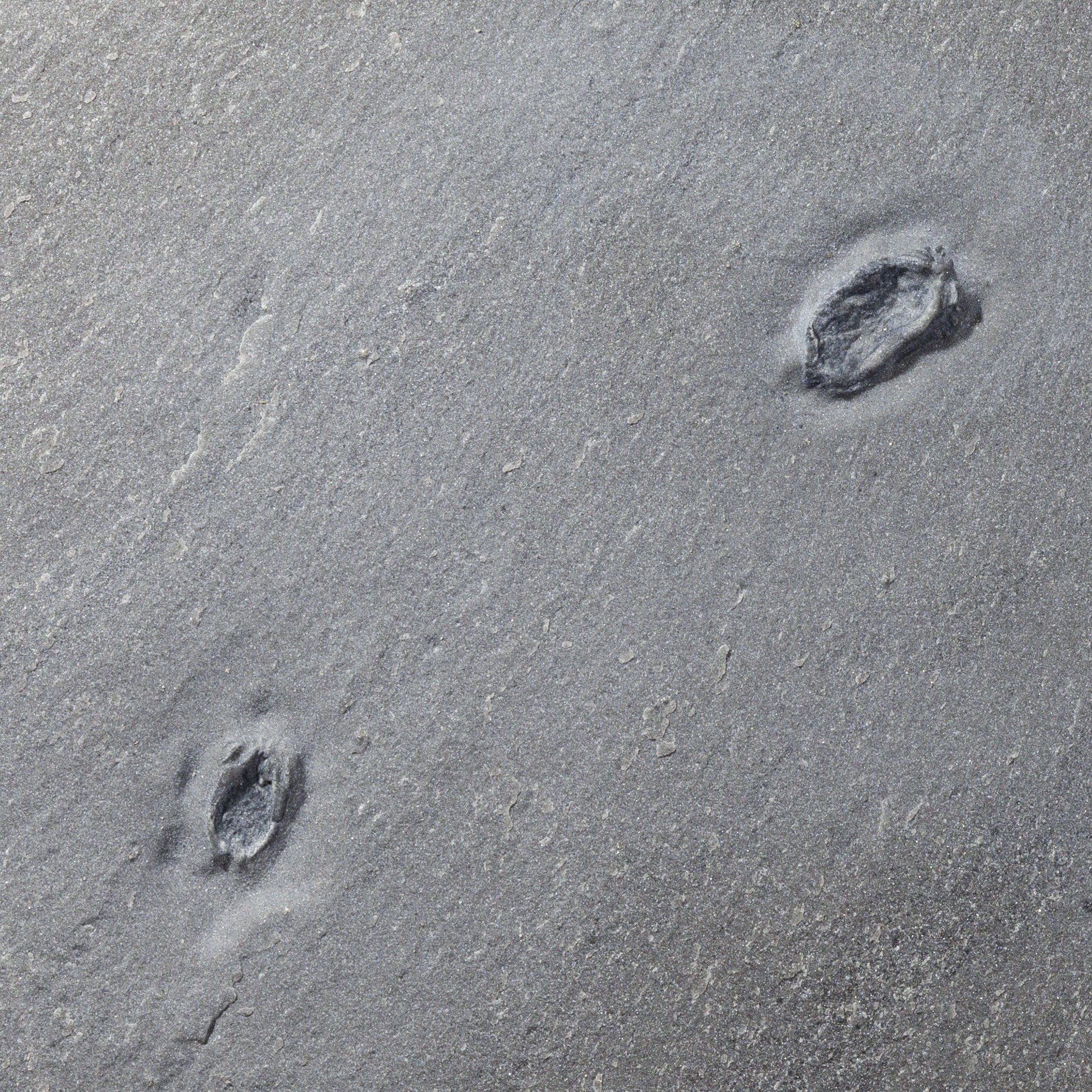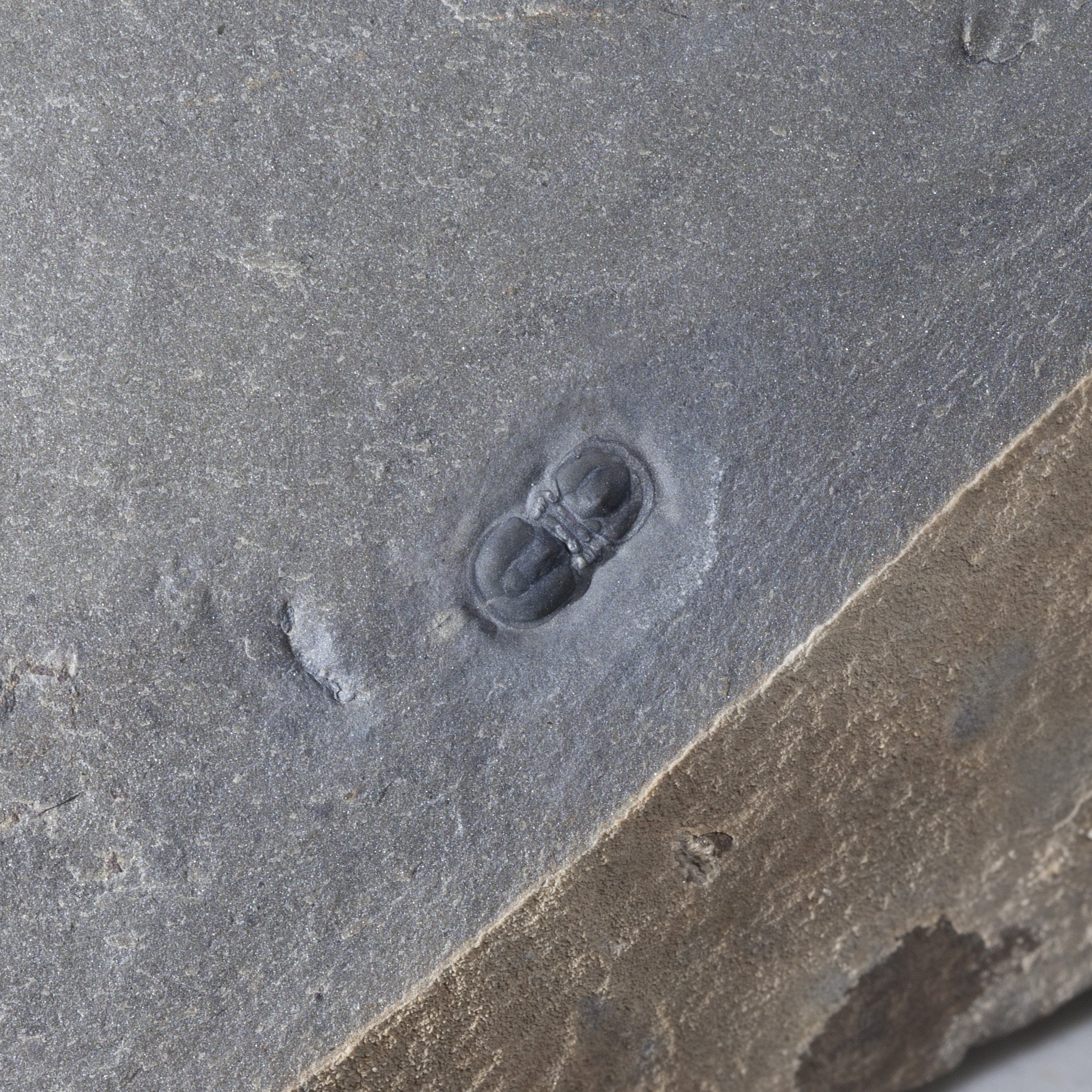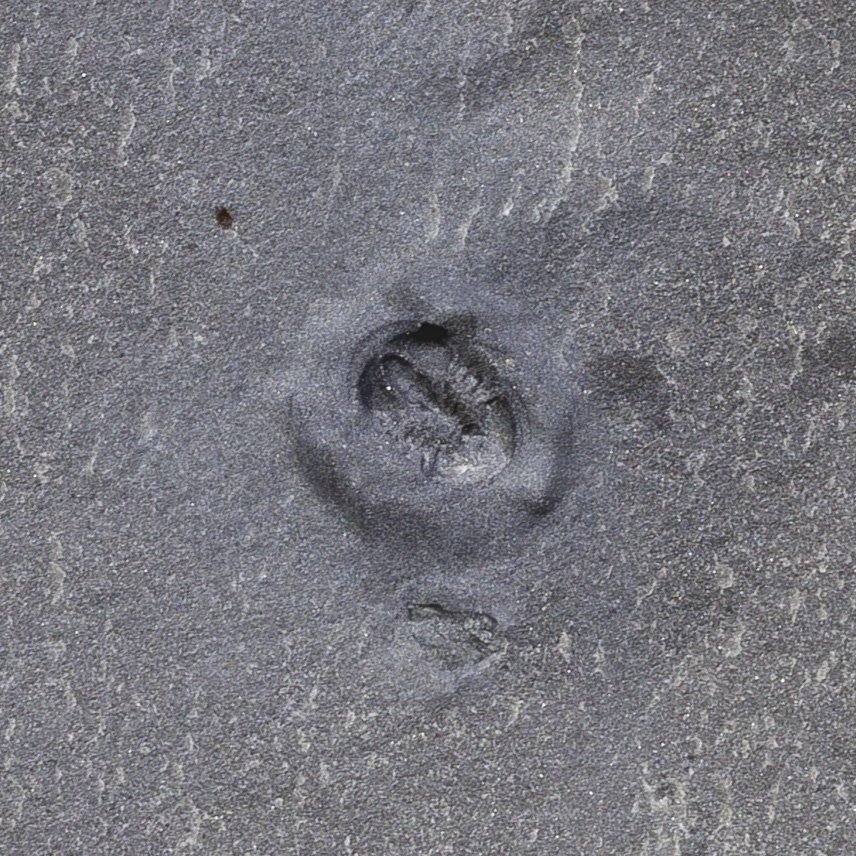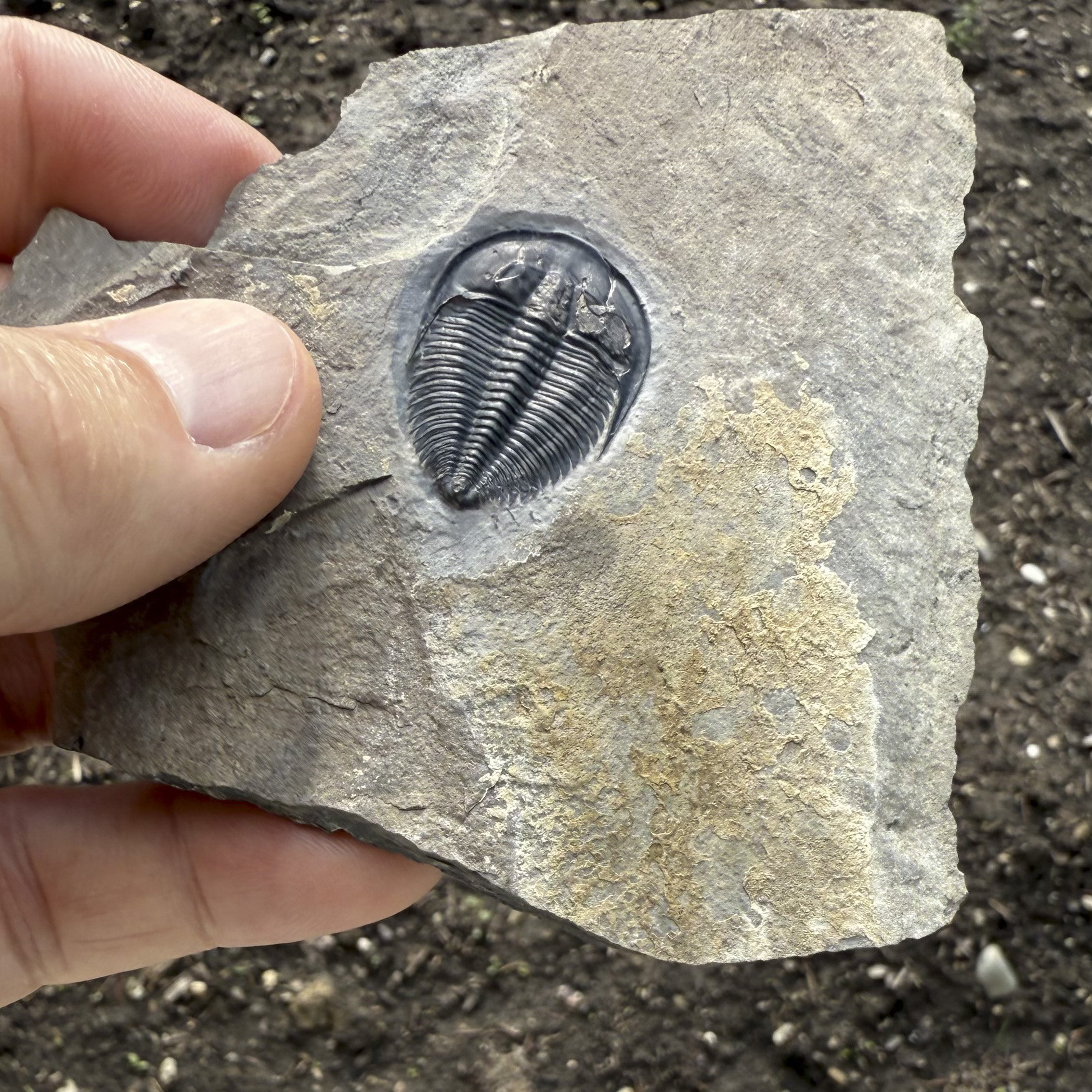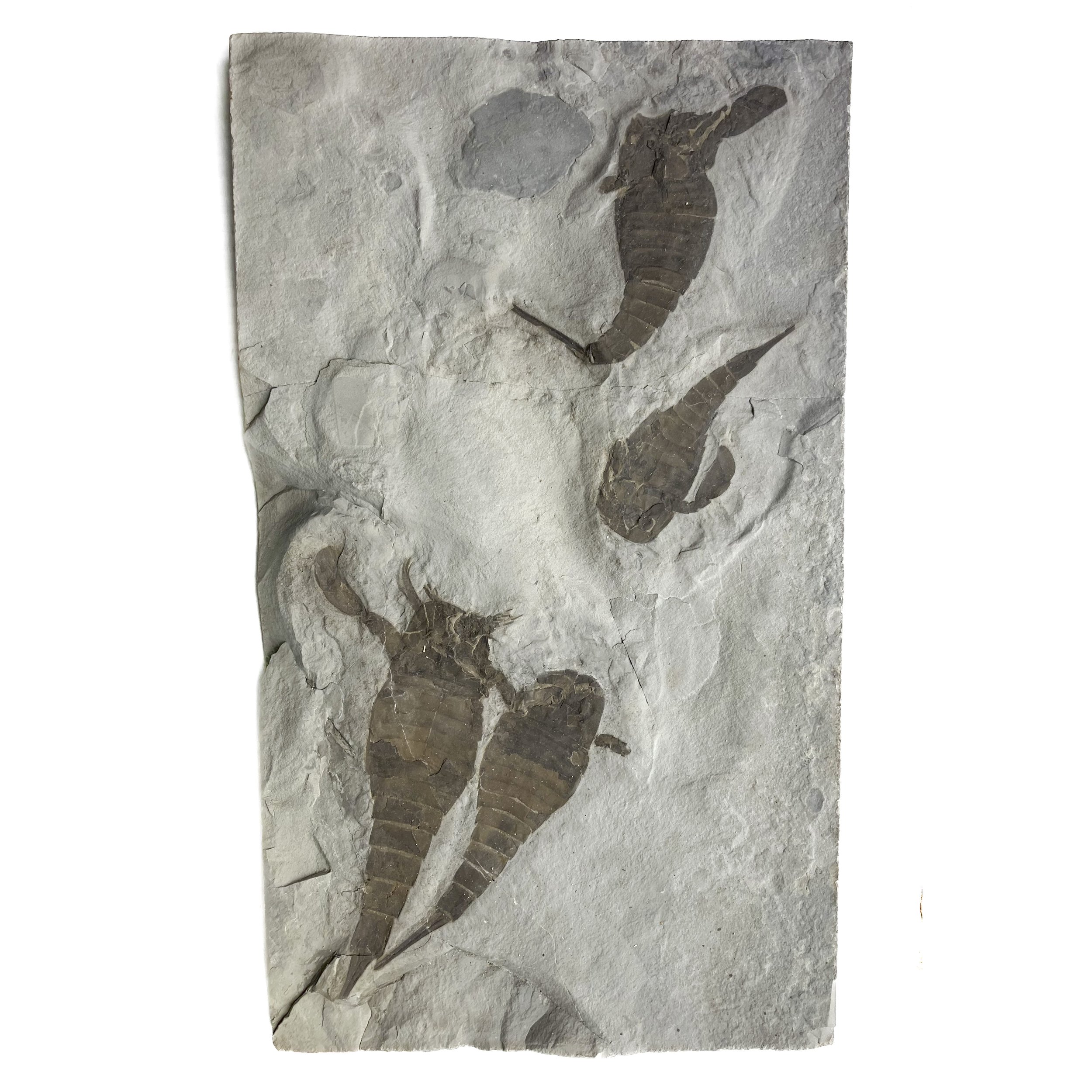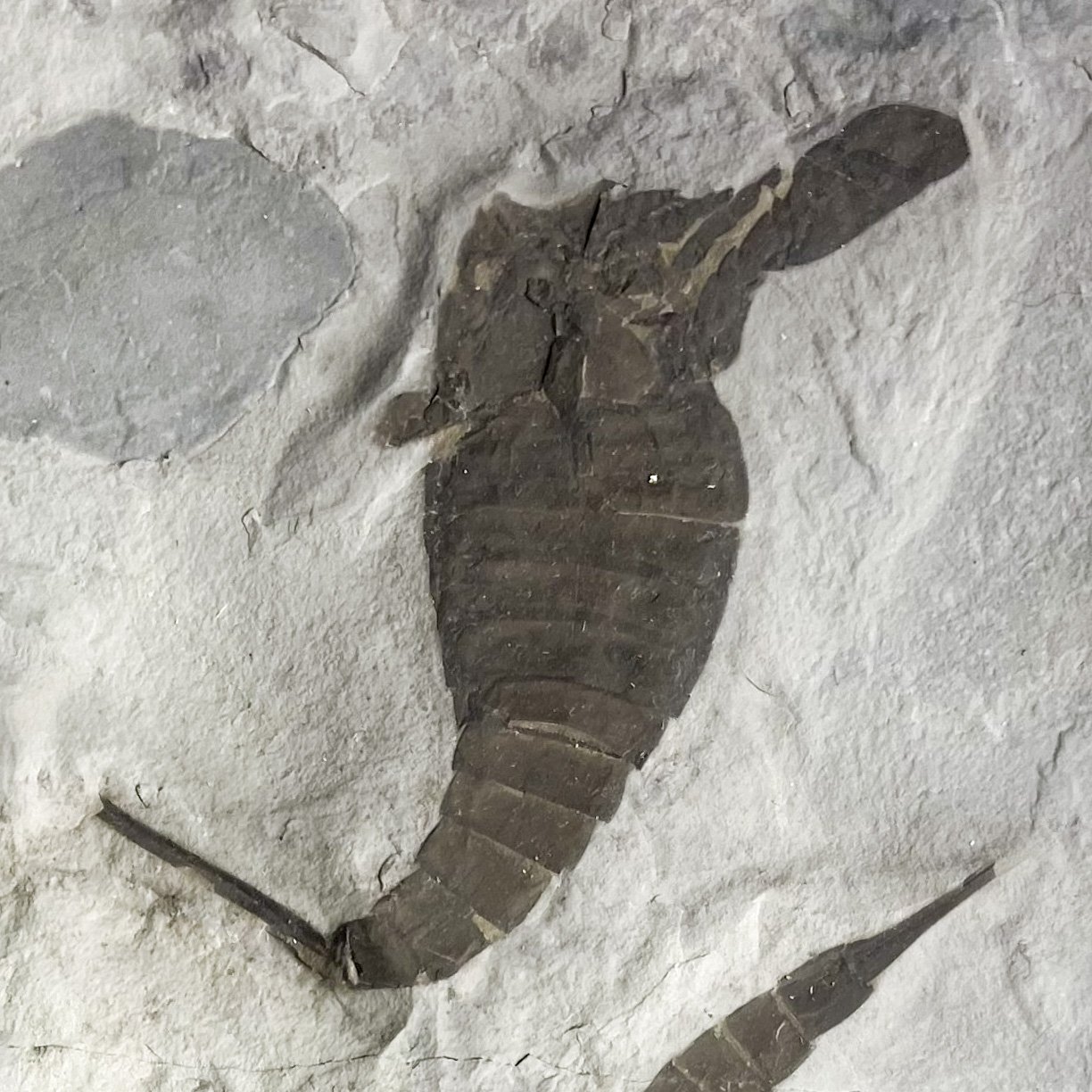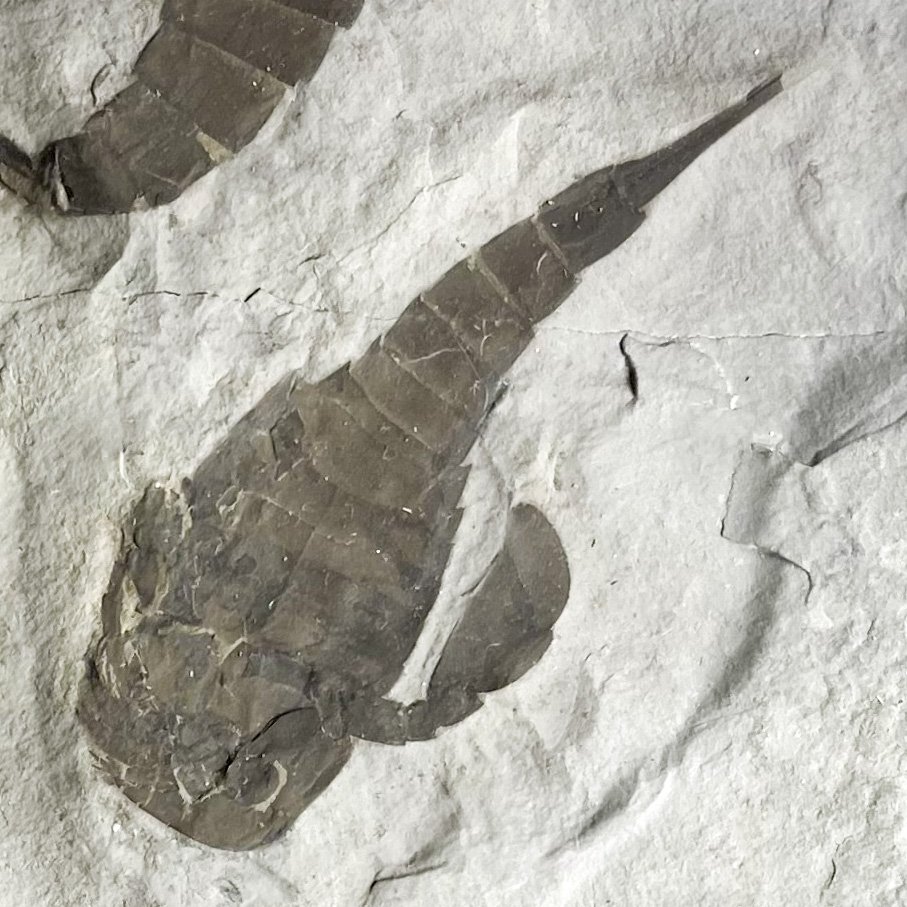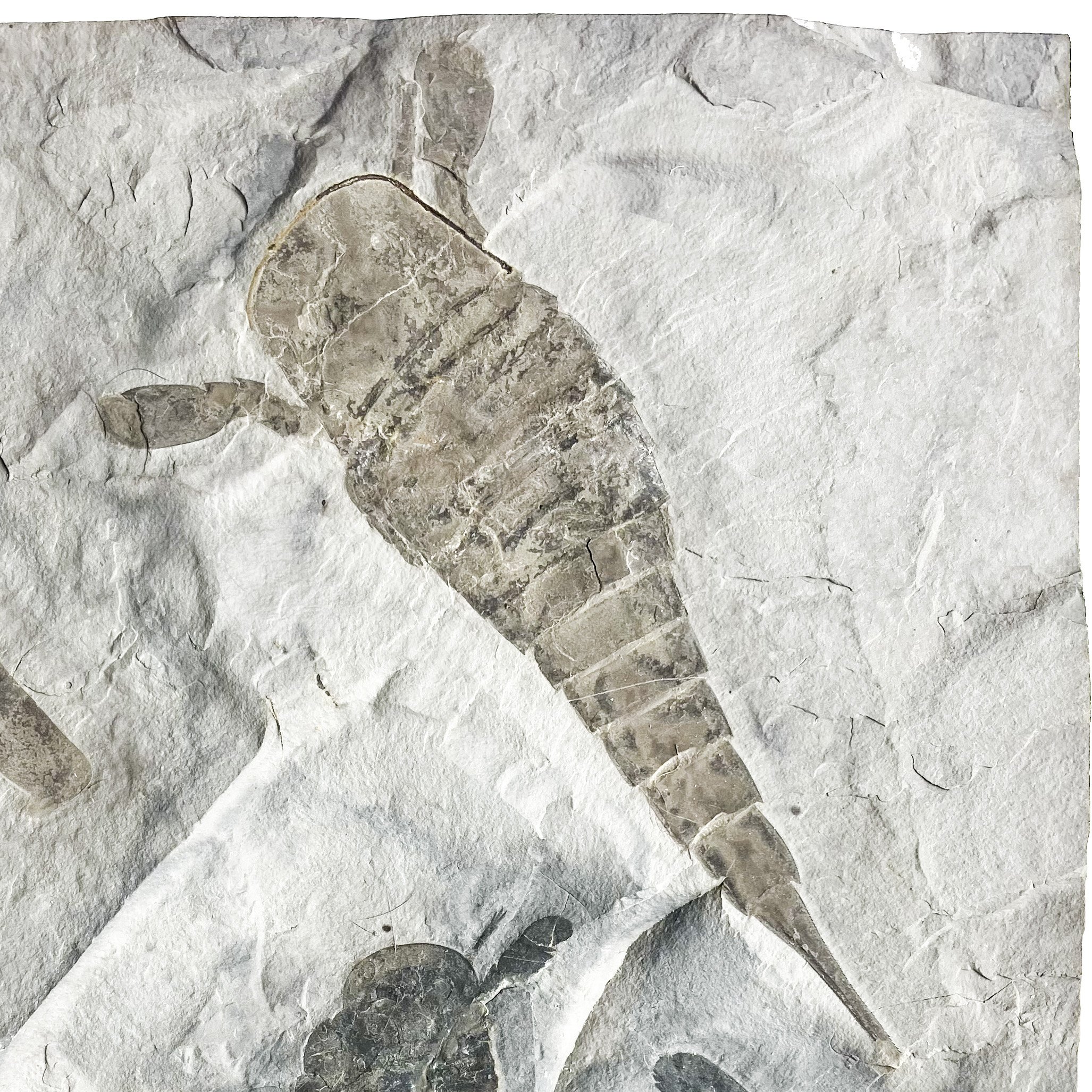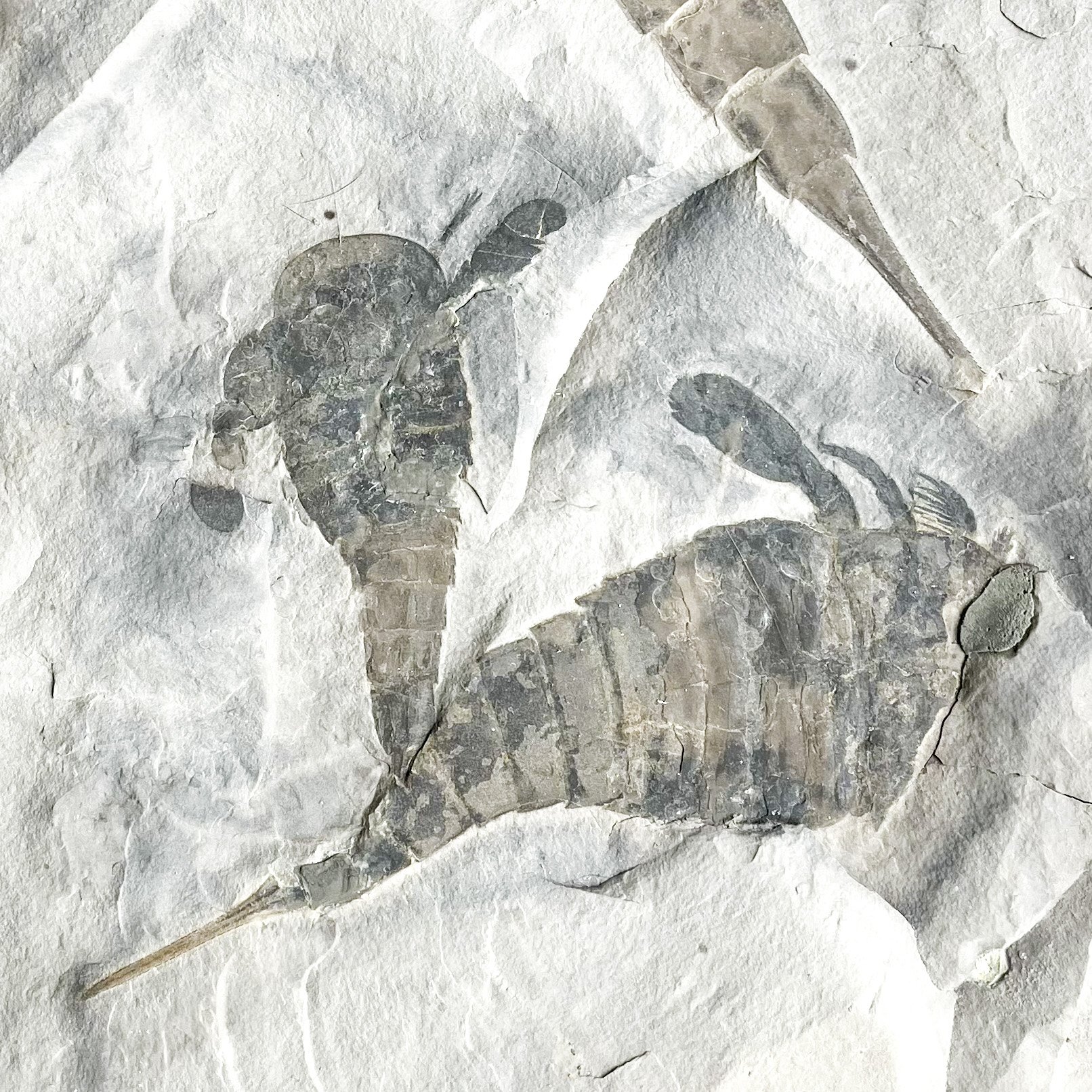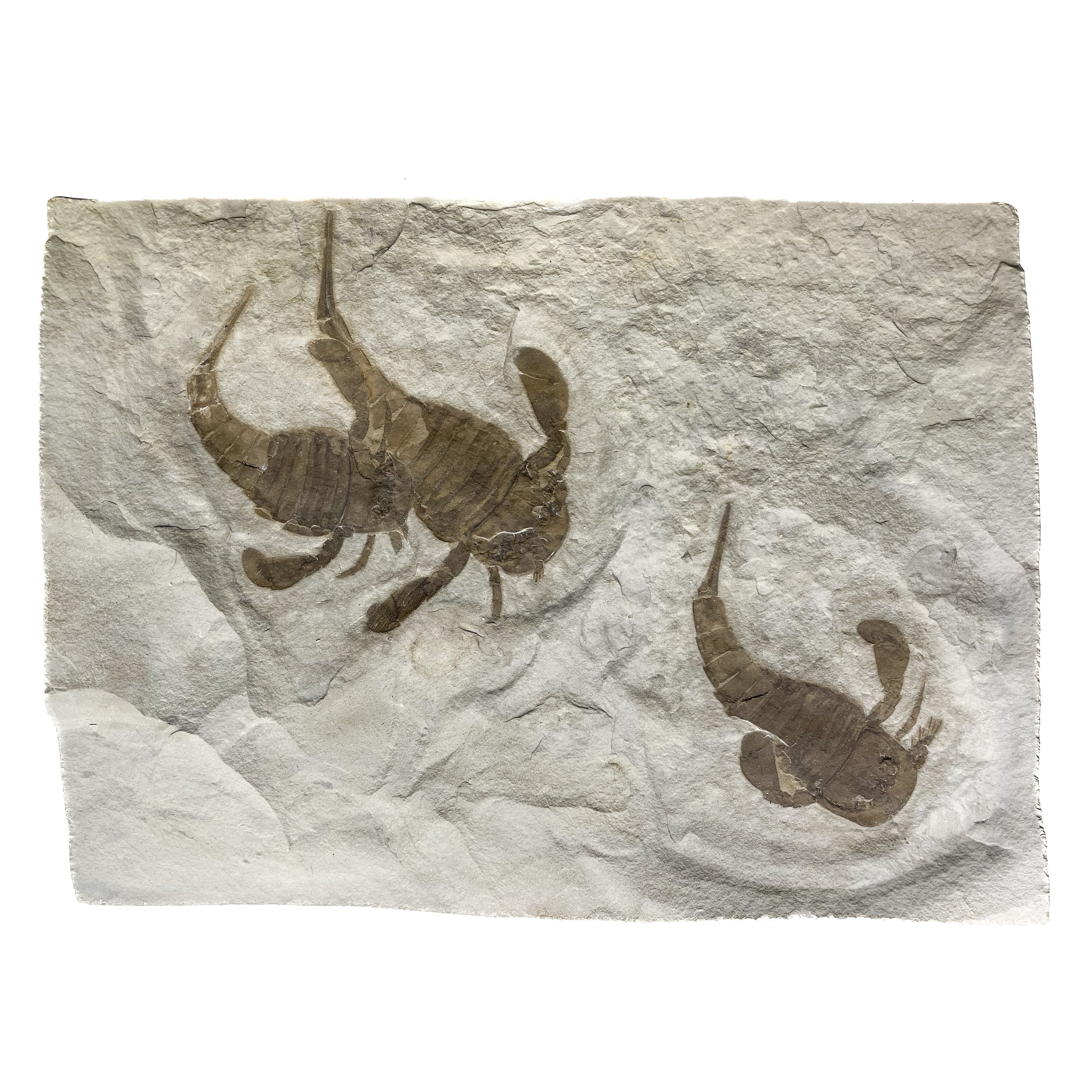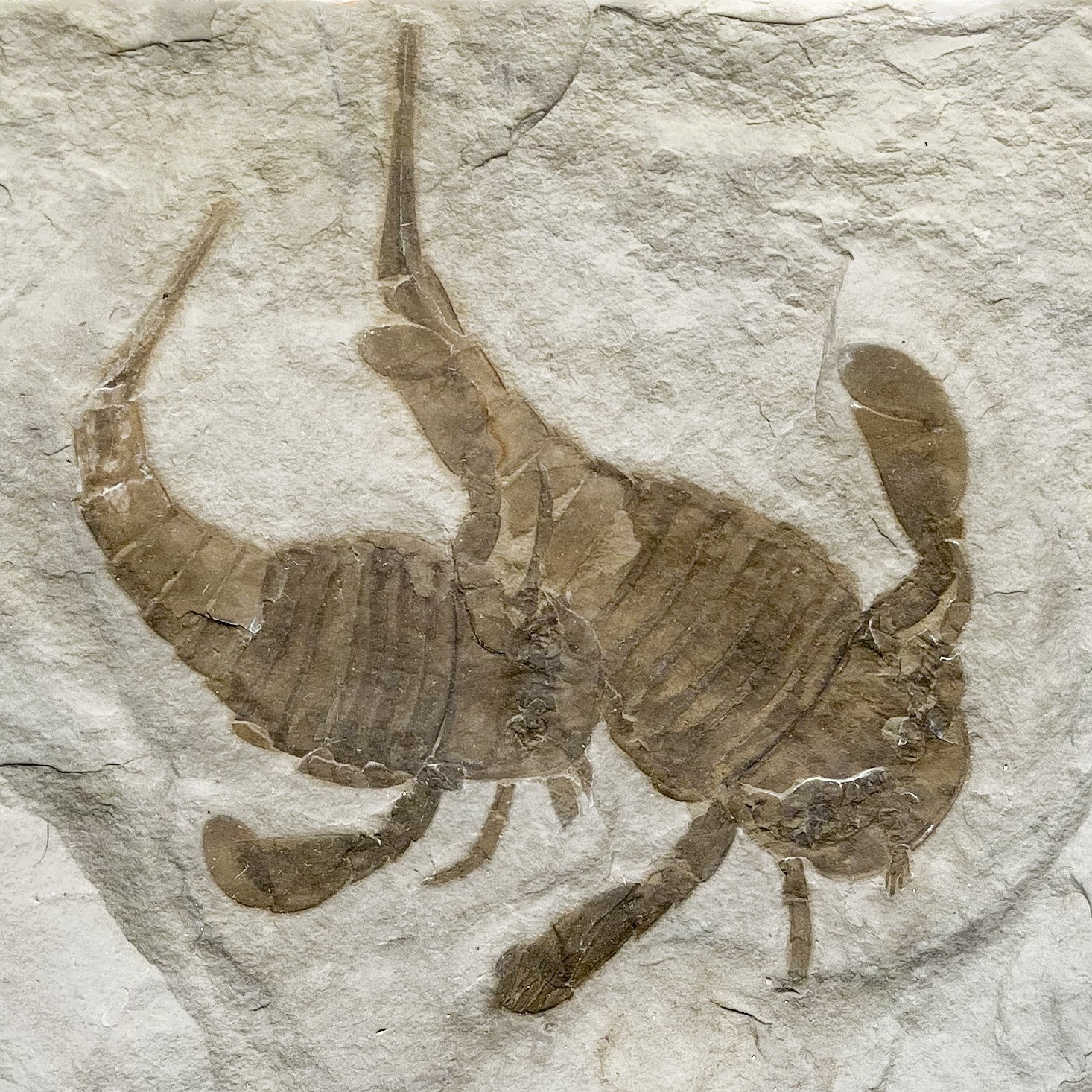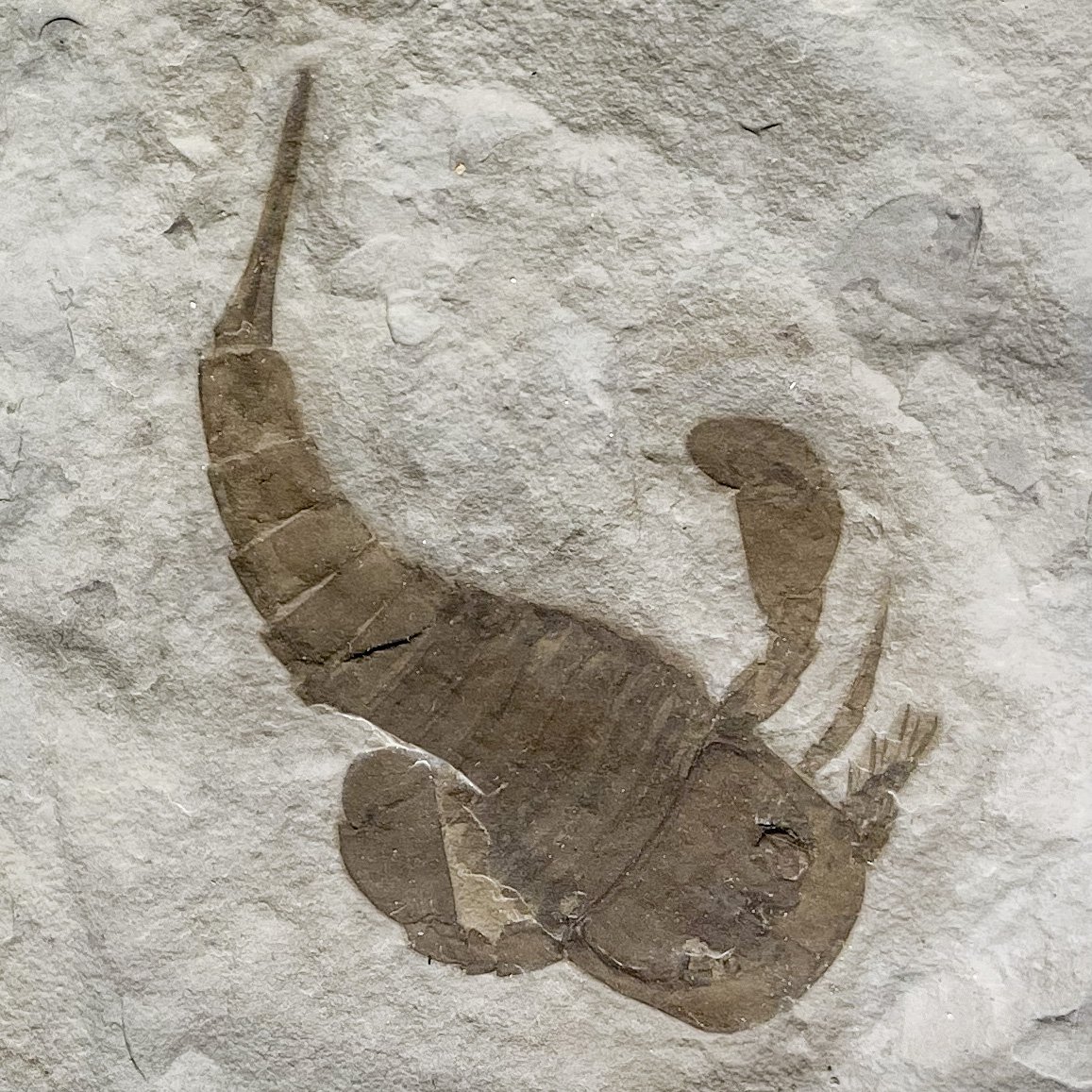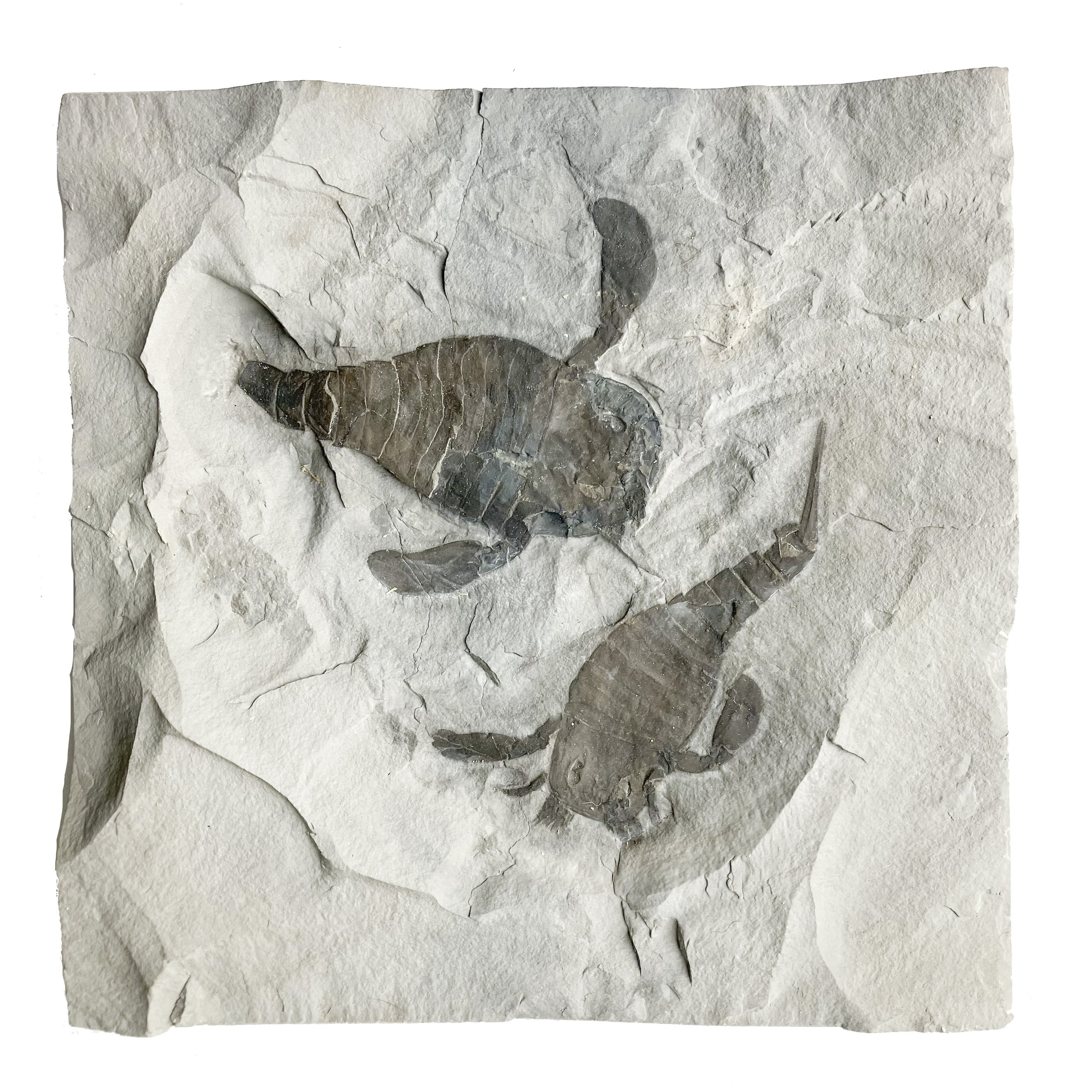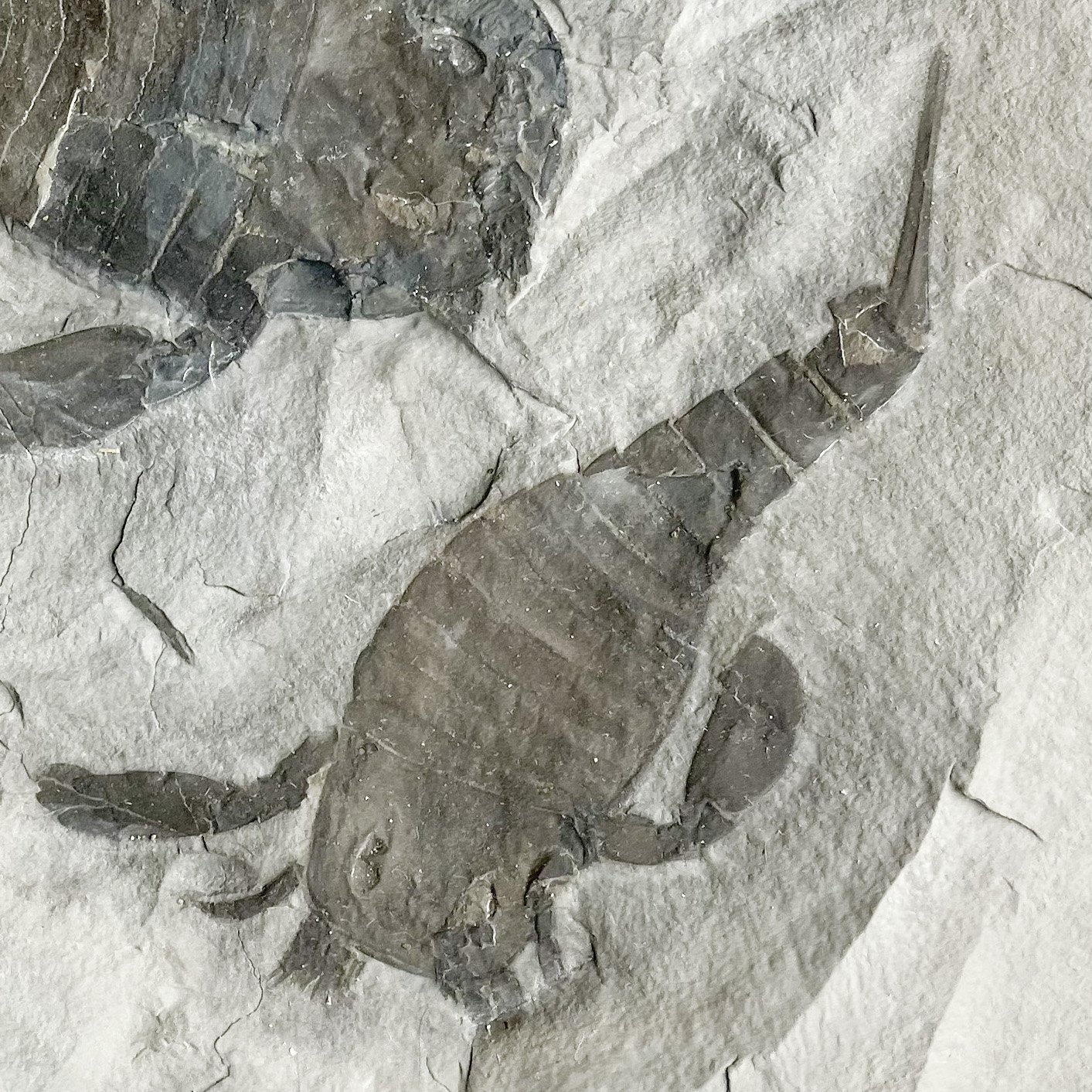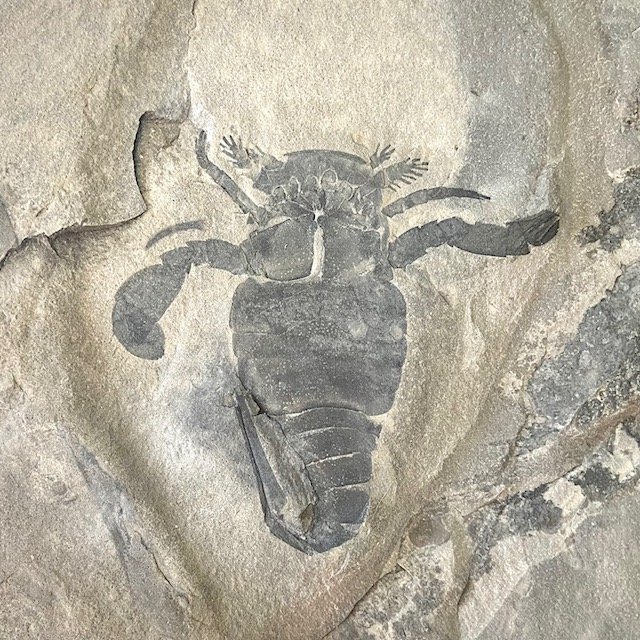 Image 1 of 1
Image 1 of 1


Eurypterus remipes
Vendor: Fossil Soup
SKU Number: SQ7533506
A beautiful 10.5 cm (outstretched length) ventrally exposed example of the eurypterid, Eurypterus remipes from the Upper Silurian (420 million years old), Phelps Waterlime member of the Fiddler’s Green Formation, Lang's Quarry, Herkimer County, New York.
This specimen has pretty much all of the major characteristics of a eurypterid clearly visible due to the ventrally preserved nature of the fossil. Appendages VI, V, IV and III are beautifully preserved, extending beyond the head-shield of the carapace. There are plausible indications that appendages II and I are also present. Other characteristics present include the faint outline of what probably is the genital appendage and the coxae of the VI appendages. The presence of so many clearly visible features make this piece a really nice complete example of a truly classic American fossil. The telson on this specimen is curved back up towards the body and is original with no restoration or repair. A great addition to any collection.
Eurypterids are arthropods commonly referred to as "sea scorpions", due to their long segmented bodies, large limb-like appendages (Appendages number VI) that extend from under the head shield (Prosoma) and what appears to be a sharp pointed tail (Telson).
Full dimensions are listed below.
Vendor: Fossil Soup
SKU Number: SQ7533506
A beautiful 10.5 cm (outstretched length) ventrally exposed example of the eurypterid, Eurypterus remipes from the Upper Silurian (420 million years old), Phelps Waterlime member of the Fiddler’s Green Formation, Lang's Quarry, Herkimer County, New York.
This specimen has pretty much all of the major characteristics of a eurypterid clearly visible due to the ventrally preserved nature of the fossil. Appendages VI, V, IV and III are beautifully preserved, extending beyond the head-shield of the carapace. There are plausible indications that appendages II and I are also present. Other characteristics present include the faint outline of what probably is the genital appendage and the coxae of the VI appendages. The presence of so many clearly visible features make this piece a really nice complete example of a truly classic American fossil. The telson on this specimen is curved back up towards the body and is original with no restoration or repair. A great addition to any collection.
Eurypterids are arthropods commonly referred to as "sea scorpions", due to their long segmented bodies, large limb-like appendages (Appendages number VI) that extend from under the head shield (Prosoma) and what appears to be a sharp pointed tail (Telson).
Full dimensions are listed below.
Additional Information
Eurypterus remipes Until 1882 no eurypterids were known from before the Silurian. Contemporary discoveries since the 1880s have expanded the knowledge of early eurypterids from the Ordovician period. The earliest eurypterids known today, the megalograptid Pentecopterus, date from the Darriwilian stage of the Middle Ordovician, 467.3 million years ago. There are also reports of even earlier fossil eurypterids in the Fezouata Biota of Late Tremadocian (Early Ordovician) age in Morocco, but these have yet to be thoroughly studied.
References:
